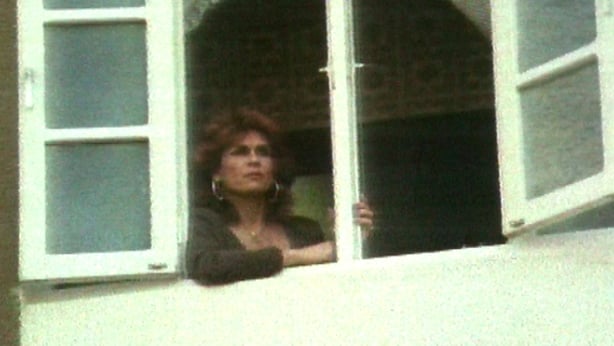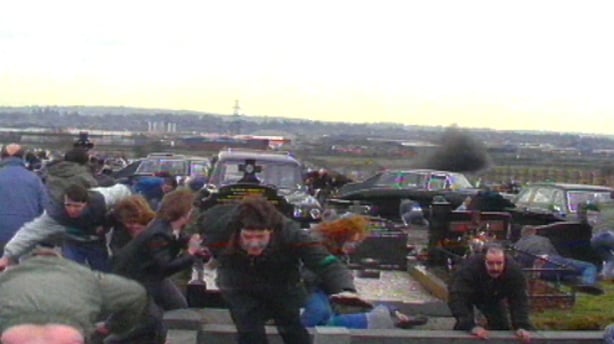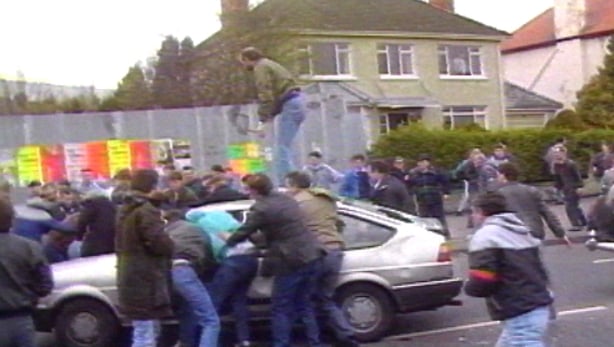The killing of three IRA volunteers by the SAS in Gibraltar in March 1988 was the catalyst for a horrific series of events that left another five people dead.
Documents from the 1988 State papers reveal the reaction from both the Irish and British governments to the three violent incidents in the space of a fortnight.
The three IRA members were shot dead by the British special forces SAS in Gibraltar on 6 March 1988.
They were suspected of being in the process of organising a bomb attack on the changing of the guard ceremony at the governor’s residence in the tiny British overseas territory bordering Spain.
The three IRA personnel - Mairead Farrell, Daniel McCann and Sean Savage - were unarmed and no bomb was discovered in their vehicle.

Three weeks after the killings in Gibraltar, a Thames Television documentary entitled 'Death on the Rock' revealed, through eyewitness interviews that the SAS shot the IRA members without any prior attempt to arrest them.
This evidence directly contradicted the official version of events and backed up ongoing claims from republicans that British forces were operating a 'shoot-to-kill' policy.
Carmen Proetta, a Gibraltarian lady who witnessed the shootings first hand, said that the IRA personnel were unarmed and holding their hands up when they were shot.
She was subsequently targeted by some British newspapers in a smear campaign that made false allegations, such as a claim that she was a former prostitute.
The Sun newspaper carried the infamous headline 'The Tart of Gib'. She later successfully pursued media organisations in a number of libel actions.

A coroner’s inquest with a jury in Gibraltar found that the SAS had acted lawfully and they were justified in their actions.
But in 1995, the families of the three IRA members took a case to the European Court of Human Rights, which found that their human right to life had been infringed.
Two days after the shooting, the Irish Government issued a statement saying it was "gravely perturbed that three unarmed Irish people were shot dead in Gibraltar when they could have been arrested by the security forces involved".
In the days after the Gibraltar shootings, there were concerns in government that one of the unfortunate results was that it "was likely to be a propaganda victory for the Provisional IRA".
In a briefing for Irish embassy diplomats in London, British officials said the position of the security forces on the ground on the day must be appreciated.
It said: "They knew they were dealing with dangerous terrorists and they had reason to suspect they may have been in a position to trigger off an atrocity."
They suggested that the SAS feared one of the three IRA members had a triggering device that could have been used to detonate a bomb.
Anglo-Irish Secretariat officials in Belfast warned their British counterparts of "the likelihood of emotional or difficult scenes" when the remains of those killed were returned to Belfast and called for "highly sensitive police handling of these cases".
Few could have predicted what would unfold at their funerals in the days afterwards.

At the funeral of three killed in Gibraltar in Belfast’s Milltown cemetery, loyalist gunman Michael Stone opened fire and threw hand grenades at mourners, killing three people and wounding 50 others.
Three days later, two British soldiers were seized by a mob while driving through republican west Belfast during the funerals of those killed at Milltown.
Dressed in civilian clothes and driving in a civilian car, British Army Corporals Derek Wood and David Howes drove into the middle of the funeral cortege by mistake.
Following Mr Stone’s attack in the cemetery, some of the mourners believed the men in the car were loyalists attempting a similar attack.
The angry crowd surrounded the car and dragged the men from it. The scenes were recorded and broadcast on television.
After the two corporals were taken from their car, they were taken away and shot dead by the IRA.
Documents released today show British Prime Minister Margaret Thatcher’s abhorrence at the deaths.
In a private meeting with Taoiseach Charlie Haughey in late 1988, Irish officials recorded her to have said: "I will never forget receiving the bodies of those two soldiers murdered in Belfast before the television cameras. Those films were seen by their relatives. That was a terrible experience."
The British government faced criticism over the speed at which the security forces intervened as the incident occurred.

Tom King, the Secretary of State for Northern Ireland, explained that the RUC were under the impression that there were no soldiers whatsoever in the area and it took some time for an army helicopter to clarify exactly what was unfolding beneath it.
"As soon as what was happening became clear, the RUC acted with speed but unfortunately they were too late to rescue the soldiers."
But the DUP’s Peter Robinson was critical of the RUC Chief Constable’s decision to "abdicate" policing responsibility to the IRA in west Belfast. Mr King denied that this was the case.
The Liberal Party MP David Alton said the television coverage revealed the IRA "in its true colours and that it was no coincidence that efforts were made by the IRA to block this coverage".
The documents show there was also concern in Irish Government circles over the television footage of the incident.
The RUC demanded access to tapes from broadcasters. ITN agreed to give the RUC access while the BBC had refused and expressed scepticism about the ITN’s alleged readiness to comply.
The documents say the RTÉ office in Belfast was also asked for its tapes but adopted the same line as the BBC.
